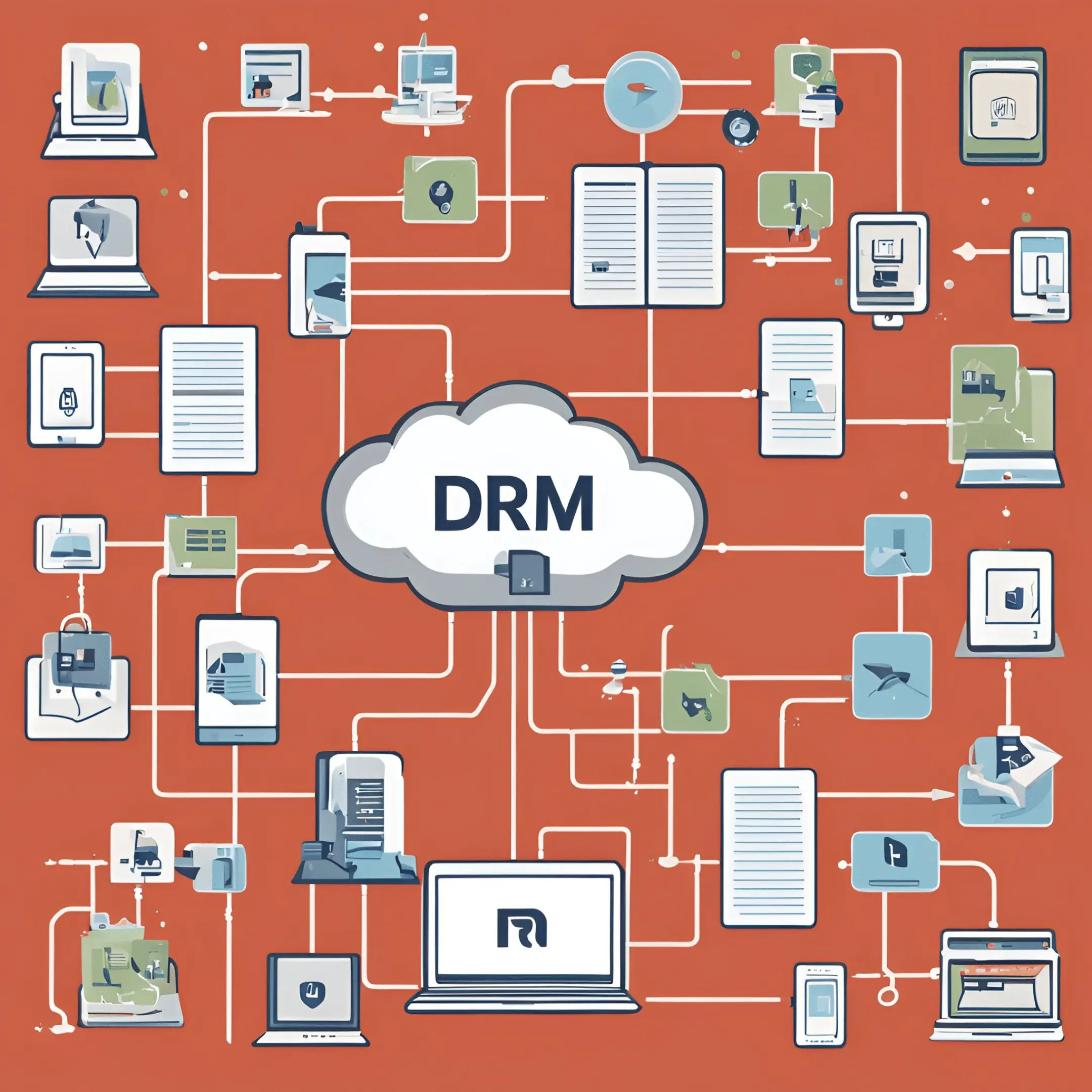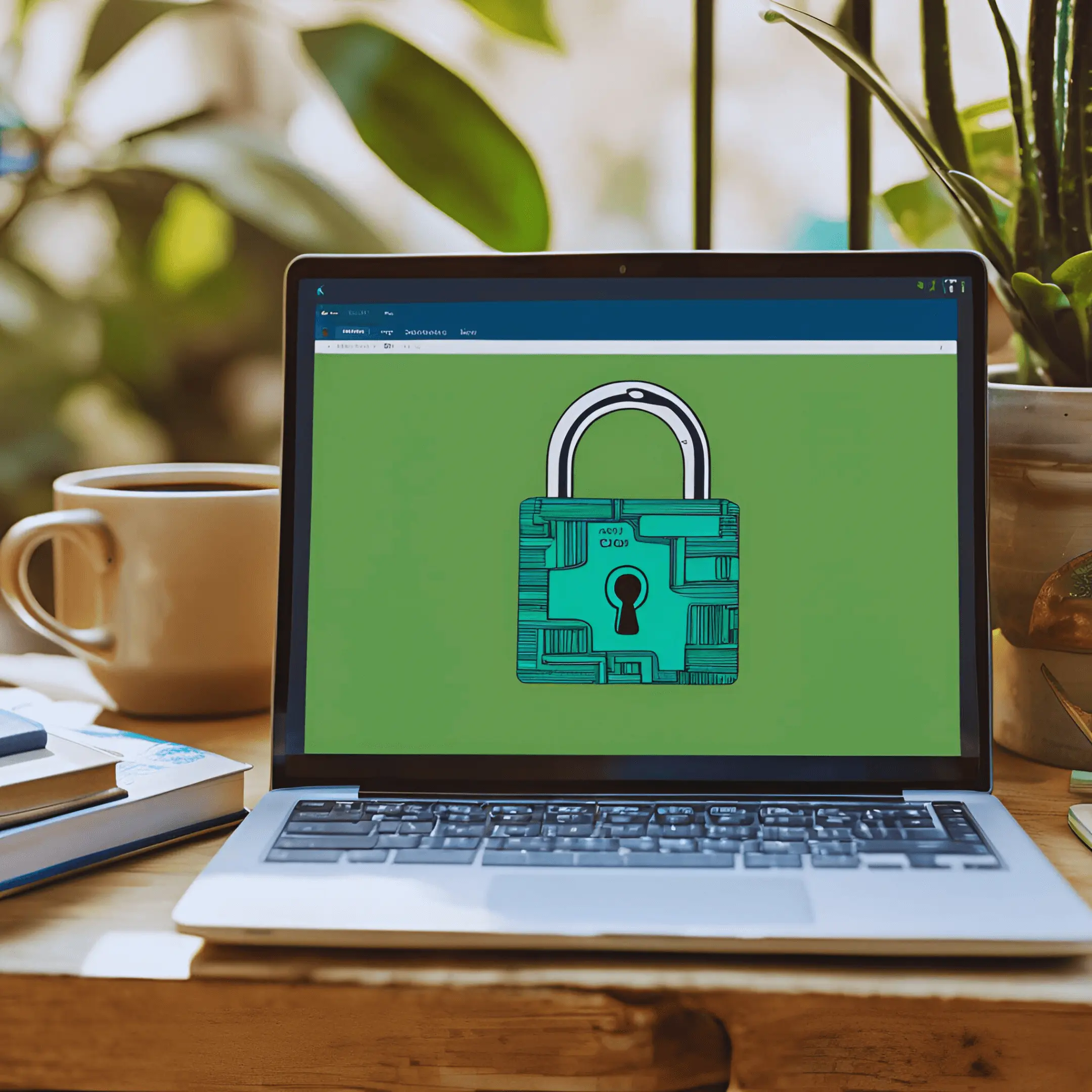With the rapid advancements in the tech world and the increase in digital activity, protecting intellectual property has never been more critical. Digital Rights Management (DRM) is a critical tool used by creators and businesses to control the use and distribution of digital content, often sparking ongoing debates.
This guide will explain what DRM is, highlight its key benefits, explore different types of DRM technologies, discuss common challenges, and provide best practices for implementation.
What is Digital Rights Management (DRM)?
Digital Rights Management (DRM) refers to a set of technologies used to control access to and usage of digital content. DRM is essential for preventing unauthorized copying, sharing, and distribution of copyrighted materials, such as eBooks, music, videos, and software.
By implementing DRM, content creators can protect their intellectual property and maintain control over how their work is used.
Key Benefits of Implementing DRM
DRM offers several significant benefits, making it an indispensable tool for digital content protection:
Protecting intellectual property
DRM ensures that only authorized users can access and use digital content, safeguarding it from piracy and unauthorized distribution.
Enhancing revenue streams
By preventing unauthorized sharing, DRM helps creators and businesses maximize their revenue potential by ensuring that only paying customers access their content.
Ensuring compliance with legal standards
Many industries are subject to regulations that require the protection of digital content. DRM helps businesses comply with these legal standards and avoid potential fines and penalties.
Different Types of DRM Technologies

DRM technologies can be broadly categorized into hardware-based and software-based solutions. Additionally, emerging technologies like blockchain and AI are revolutionizing the DRM landscape.
Hardware-based DRM
This type of DRM is embedded directly into physical devices. Examples include DRM in DVD and Blu-Ray players, which prevent the copying and unauthorized playback of discs.
Software-based DRM
These solutions are implemented through software applications. Common examples include digital watermarks, encryption, and access control mechanisms used in eBooks, music, and video streaming services.
Adobe DRM
Adobe DRM is a widely used digital rights management solution known for its robustness and reliability. It is particularly popular in the publishing industry for protecting eBooks and other digital publications. Adobe DRM offers several features, including:
Encryption: Adobe DRM encrypts digital content to prevent unauthorized access and distribution. Only authorized users with the correct decryption keys can access the content.
Access Control: It allows publishers to set permissions for their digital content, such as limiting the number of devices that can access the content and preventing copying or printing.
User Authentication: Adobe DRM requires users to authenticate their identity before accessing the protected content. This ensures that only legitimate users can access the material.
Compatibility: Adobe DRM is compatible with a wide range of devices and platforms, including eReaders, tablets, and smartphones, providing flexibility for both publishers and consumers.
By implementing Adobe DRM, publishers can protect their intellectual property, ensure compliance with legal standards, and enhance their revenue by preventing unauthorized distribution.
Readium LCP
Readium LCP (Licensed Content Protection) is an emerging DRM technology designed to provide a user-friendly and secure solution for protecting digital publications. It is particularly suited for the open-source community and offers several advantages:
Interoperability: Readium LCP is designed to work seamlessly with various reading systems and platforms, promoting a more open and flexible approach to DRM.
Ease of Use: It focuses on providing a smooth user experience, minimizing the restrictions that often frustrate users while still offering robust protection for digital content.
Cost-Effective: Readium LCP is an affordable DRM solution, making it accessible for smaller publishers and independent authors who need to protect their work without incurring high costs.
Security Features: Like Adobe DRM, Readium LCP offers encryption and access control features to prevent unauthorized use and distribution of digital content.
By choosing Readium LCP, publishers and authors can benefit from a flexible and user-friendly DRM solution that still provides the necessary protection for their digital content.
Emerging trends: blockchain and AI in DRM
Blockchain technology offers a decentralized approach to DRM, ensuring transparent and tamper-proof management of digital rights. AI can enhance DRM by detecting and preventing unauthorized use of digital content through advanced pattern recognition and machine learning algorithms.
Common Challenges and Controversies of DRM
While DRM provides robust protection for digital content, it is not without its challenges and controversies:
Criticisms and limitations
Critics argue that DRM can be overly restrictive, limiting legitimate use of digital content and frustrating consumers. It can also be bypassed by determined hackers, reducing its effectiveness.
Balancing security with user experience
Implementing DRM in a way that balances security with a positive user experience is crucial. Overly restrictive DRM can lead to a negative user experience, driving customers away.
Legal and ethical considerations
DRM can raise legal and ethical issues, particularly when it comes to user rights and fair use. Ensuring that DRM implementation respects these rights is essential to maintaining trust and compliance.
Best Practices for Implementing DRM
To effectively implement DRM and maximize its benefits, consider the following best practices:
Choosing the right DRM solution
Select a DRM solution that aligns with your specific needs and business goals. Consider factors such as ease of use, compatibility with your content, and the level of protection offered.
Effective strategies for implementation
Implement DRM as part of a broader digital content strategy. Conduct a thorough audit of your content distribution channels and security protocols to identify potential vulnerabilities.
Avoiding common pitfalls
Communicate the reasons for implementing DRM clearly to your users to avoid confusion and resentment. Regularly monitor and update your DRM system to ensure it remains effective and user-friendly.
In Summary
Digital Rights Management (DRM) is a vital tool for protecting digital content in today's interconnected world. By understanding what DRM is, its benefits, the different types of technologies available, and how to implement it effectively, creators and businesses can safeguard their intellectual property and ensure their content is used appropriately.
As digital content continues to grow in importance, the role of DRM will only become more critical in maintaining control and maximizing revenue.



